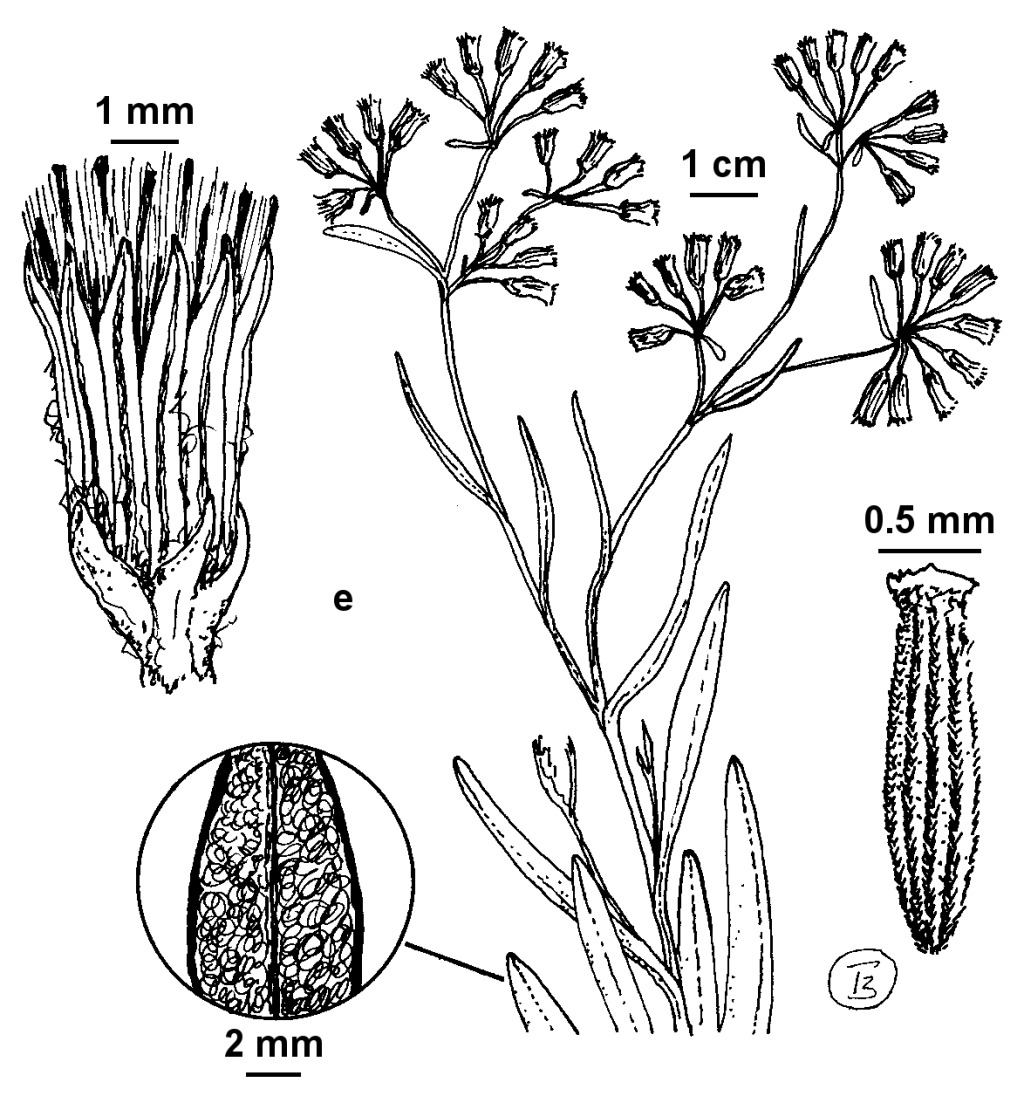Senecio georgianus
DC.Slender, erect, possibly rhizomatous perennial to c. 60 cm high; at least young growth whitish from a covering of matted cobwebby hairs, older stems glabrescent. Leaves pseudopetiolate, not auriculate, narrowly oblanceolate to linear, 3–10 cm long, 2–5(–8) mm wide, entire or serrate; margins of at least the narrower upper leaves usually revolute; upper surface finally glabrous or sparsely cobwebbed, lower surface usually remaining whitish-cobwebbed. Inflorescence corymbose, 3–6 cm across in most specimens, with c. 15–30 capitula; capitula non-radiate; involucre cylindric or narrow-campanulate, 5–7 mm long, cobwebbed at base; bracts c. 12, recurved at apex at anthesis; bracteoles present; florets c. 30–40, all bisexual. Cypselas cylindric or truncated-fusiform, 2–2.5 mm long, brown, broadly ribbed, densely papillose-hairy in intervening grooves; pappus of slender hairs 5–7 mm long, deciduous. Flowers Dec.–Jan.
Also NSW (presumed extinct), Tas (presumed extinct). Known in Victoria by a few pre-1900 specimens from Lake Omeo near Benambra, and Macalister River, but apparently now extinct in this and other States.
Walsh, N.G. (1999). Senecio. In: Walsh, N.G.; Entwisle, T.J., Flora of Victoria Vol. 4, Cornaceae to Asteraceae, pp. 941–965. Inkata Press, Melbourne.
 Spinning
Spinning

